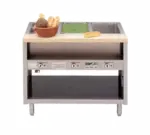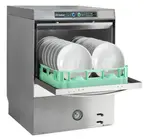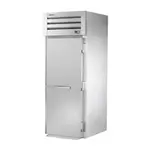
Reducing Food Waste in Restaurants
Before the first course even hits the table, a restaurant’s kitchen has likely seen its fair share of food scraps. Chopping broccoli florets a bit too short, undercooked rice thrown out, or oversauced pasta back into the pot. Such mishaps accumulate rapidly before diners even arrive.
This is the all-too-common reality for restaurants worldwide, where valuable resources are squandered on an epic scale. However, it does not have to be this way. Most solutions demand little more than a shift in perspective. This means treating food waste as a problem that requires solutions instead of an inevitable side effect of the restaurant industry.
This comprehensive guide provides practical and proven tactics any restaurant can implement to reduce unnecessary food waste significantly. From preparing exact and realistic food amounts to redeploying extra ingredients in new dishes, these best practices approach food as a resource to optimize rather than an expenditure to excess.
Types of Restaurant Food Waste
Most restaurants generate significant amounts of food waste from produce trimmings, meat and bone waste, old bread, and other unusable leftovers. By categorizing the types of food losses, restauranteurs can develop targeted responses that minimize each source of waste.

- Prep waste: This includes fruits, vegetables, and other items trimmed, peeled, or otherwise discarded during food preparation, such as banana peels, lemon rinds, carrot ends, etc.
- Plate waste: This is uneaten or leftover food on customers’ plates after meals. This can include partially eaten entrees, leftover sides, and untouched bread or condiments.
- Expired food: Restaurants often have to discard food that has passed its expiration or use-by date, like deli meats, dairy products, and bakery items.
- Overproduction: Many restaurants make more food than necessary to ensure they have enough for demand. The excess food is typically thrown away.
- Spoilage: Perishable food items that spoil before they are used due to improper storage or food freezing techniques. This includes meat, dairy, produce, and baked goods.
- Spills and drippings: Food items accidentally dropped or spilled during preparation or serving. Though minor individually, these can add up significantly over time.
Ways to Reduce Food Waste in Restaurants
Today, restaurants produce over 12 kg of food waste per person, amounting to billions in losses for the industry and countless benefits lost for surrounding communities. Whether you are just starting or ready to prevent food waste, the strategies ahead can reduce restaurants’ food waste to realize the full potential of every order placed and plate served.

Food Waste Audit
A food audit provides detailed data on where and how much food is going to waste, which guides owners on which strategies will have the biggest impact. To do this, record all types of food waste generated over a set period, typically 1-2 weeks. Staff should separate and weigh or measure all waste food, including plate waste, prep waste, and spoilage.
Once the initial audit is complete, analyze the data to identify major sources of waste. For example, owners may find that plate waste from pasta entrees on weekends accounts for over 20% of total waste. With this insight, owners can test specific changes to reduce waste from these sources with strategies like smaller pasta portions on weekends, changing vegetable prep methods, or donating more excess prepped vegetables.
Avoid Over-Preparing
While it is good to be prepared, over-preparing often results in over-producing food that will just end up in the bin. Instead, determine the exact quantities needed based on historical sales data for food waste management. For instance, analyze records to calculate average entree, side dish, and appetizer orders for lunch vs. dinner, weekdays vs. weekends, and by season if relevant. Use these numbers rather than just guessing the amounts needed
For dishes that must be premade in batches, only partially prepare some components that are difficult to store. For example, dice but only cook potato sticks for chowder once an order comes in, or prep salads without dressing to avoid sogginess. Finally, train the crew to monitor sales throughout service and adjust batch sizes on the fly as needed. If entrees are selling faster than expected, scale up the sizes of subsequent batches to catch up.
Properly Store Food
Storage has a major impact on how long food stays fresh and usable, directly affecting the amount of food waste in restaurants. Simple techniques and appropriate equipment can dramatically reduce spoilage and waste by preserving the quality and freshness of ingredients for as long as possible.
- Refrigerate food promptly: As soon as prep work is completed on meats, produce, and other items requiring refrigeration, store them correctly. The longer food sits out at room temperature, the faster bacteria grow, and spoilage occurs.
- Date and label all storage containers: Write the date and name of the food on all containers used for storage. This helps identify items that may have been in storage too long and need to be used promptly or discarded.
- Use shallow containers for refrigeration: Wider, flatter containers allow for more surface area exposure to cold air, helping food chill and last longer in the fridge.
- Invest in equipment to prolong shelf life: Undercounter refrigeration, walk-in freezers, vacuum sealers, and antimicrobial food storage containers can all extend the usability of the stored ingredients.
Calculate and Control Inventory Management
Proper controls allow establishments to order just the right amount of ingredients needed before replacements arrive. To establish a baseline, restaurants should determine typical usage and waste rates for all inventory items. They can then forecast needs based on trends, upcoming menus, and seasonal changes.
Setting minimum “par” levels and maximum “order point” levels ensures a buffer stock without excessive amounts. Staff must visually check dates when new stock arrives and follow strict first-in, first-out rotation. Regular physical inventory counts will also reveal any discrepancies to investigate and correct. Finally, parameters like par levels and order points should be reevaluated semi-annually to reflect any changes in consumption.
Identify Multiple Use Menu Items & Repurpose Ingredients
With some creativity, several menu strategies can maximize the value of the resources. For instance, design dishes that can be sold in different ways or at different meal periods. For example, chicken breast can be served as a lunch entree, added to pasta dishes for dinner, or chopped and used in sandwiches or salads later in the day.
Rather than discarding unsold food at the end of service, incorporate these ingredients into new recipes. For example, leftover rice and vegetables can be made into fried rice, while leftover potatoes can become hash browns or croquettes. In addition, food recycling strategies also lower disposal costs for businesses and divert waste from landfills, supporting sustainability goals.
Have a Takeout Option With Eco-Friendly Containers
Offering takeout and delivery meals is a growing part of many restaurants’ businesses. However, disposable containers, utensils, and sauces packs that typically accompany these orders can generate significant waste. However, making simple changes to the delivery packaging and processes can reduce environmental impacts and cut costs.

- Use Compostable or Recyclable Containers: Switch from traditional plastic or Styrofoam takeout containers to ones made from renewable, plant-based materials that are fully compostable.
- Provide Reusable Bags for Customers: Customers can bring their reusable bags or purchase high-quality ones from your restaurant.
- Supply Condiments by Request Only: Ask customers if they need sauce packets, jelly, butter, or other condiments instead of including them with every order.
- Replace Disposable Utensils with Reusables: Provide reusable metal cutlery sets to customers who order takeout rather than plastic or paper utensils. They can either return the utensils after use or pay a deposit refunded upon their return.
Donate Leftovers
What do restaurants do with leftover food? If safe and properly stored, excess food that cannot be repurposed can often be donated to food banks, homeless shelters, and community organizations. First, it is important to contact food banks, soup kitchens, homeless shelters, and other non-profits in the area to see if they accept food donations from restaurants. Afterward, build relationships with 2-3 organizations to make regular donations.
Ensure all excess and leftover food is properly stored and handled according to the health code. Only donate food that has been stored at the correct temperatures. Use clean, airtight containers for packaging different types of donated food separately and label containers with food names and preparation/storage dates. Finally, treat donating leftovers as the norm, not an afterthought. Implement food waste systems and instill in staff the goal of sending zero edible food to landfills to maximize the resources’ value.
Conclusion
The challenge of restaurant waste management is far from over. However, by implementing simple changes, restaurant owners can make a real difference. Indeed, a cultural shift can begin as we see more chefs, servers, and managers speaking up and taking action.
FAQ
How do you track restaurant food waste?
Weigh the waste at the end of each day and keep daily records to monitor changes over time. This will allow you to track trends and identify the items that contribute the most to waste. Based on the data, make adjustments to recipes, ordering, and portion sizes.
What are the main reasons why food is wasted in restaurants?
Overproduction, improper food handling and storage, expiring food, and plate waste when customers cannot finish their meals.
Should customers have the option to order smaller portions?
Yes, offering smaller portion sizes can significantly reduce waste from uneaten food. Even a 10-20% decrease in standard portions can make a difference, and customers should have the choice to order a full or smaller size.
Where should the leftover food be donated?
Donating excess edible food to local organizations like food pantries, soup kitchens, and homeless shelters is a great way to reduce waste and help those in need. Choose charitable groups that can reliably pick up donations regularly.
What training should the staff go under for proper food handling and storage?
Staff should undergo training on food safety, proper refrigeration and storage temperatures, guidelines for rotating and expiring food products, and safe food preparation. Regular refresher courses are also important to reinforce good habits and update staff on any changes to health codes





